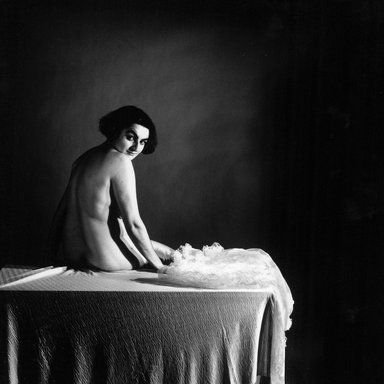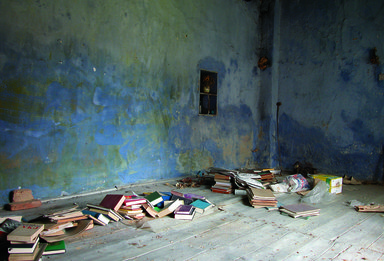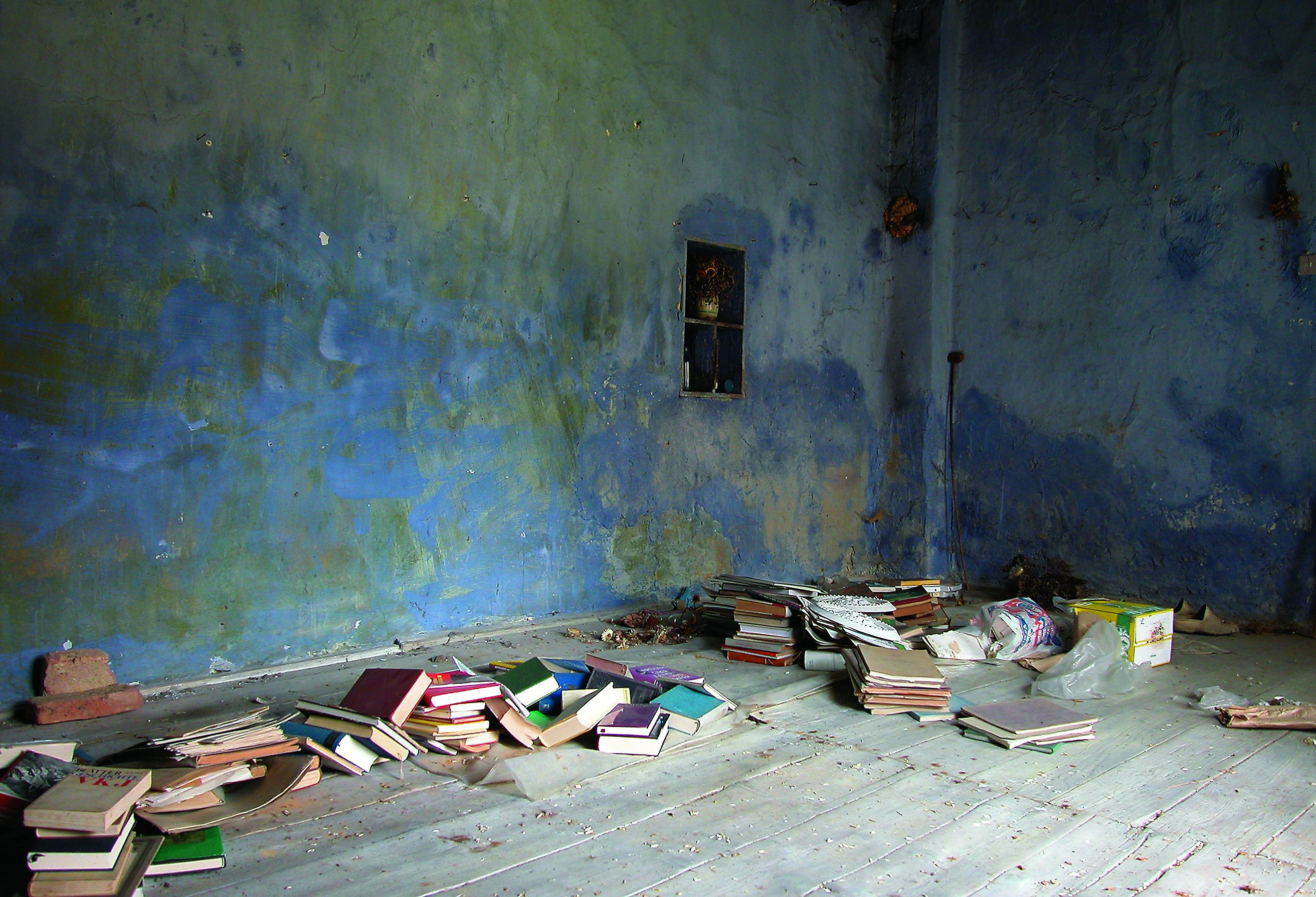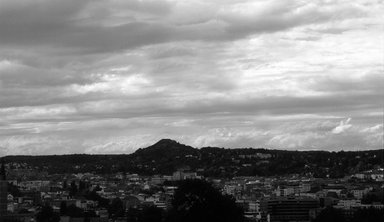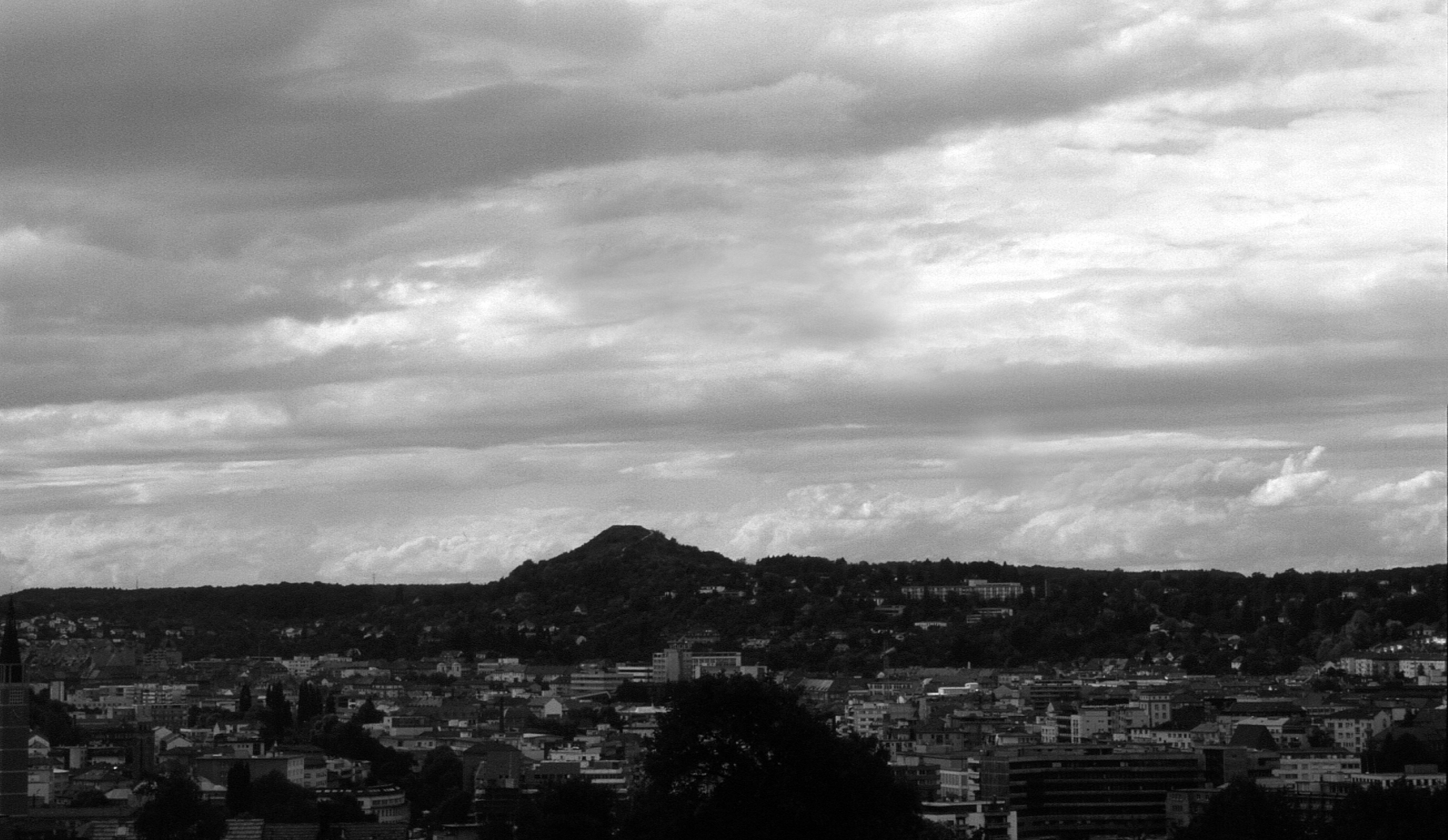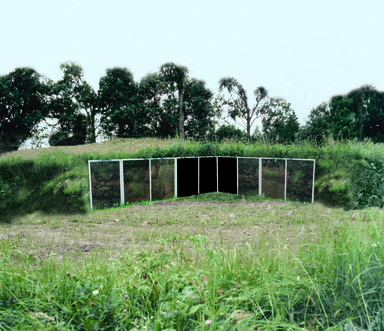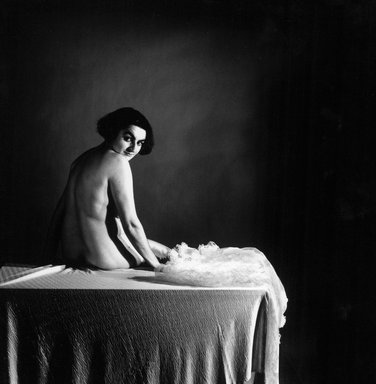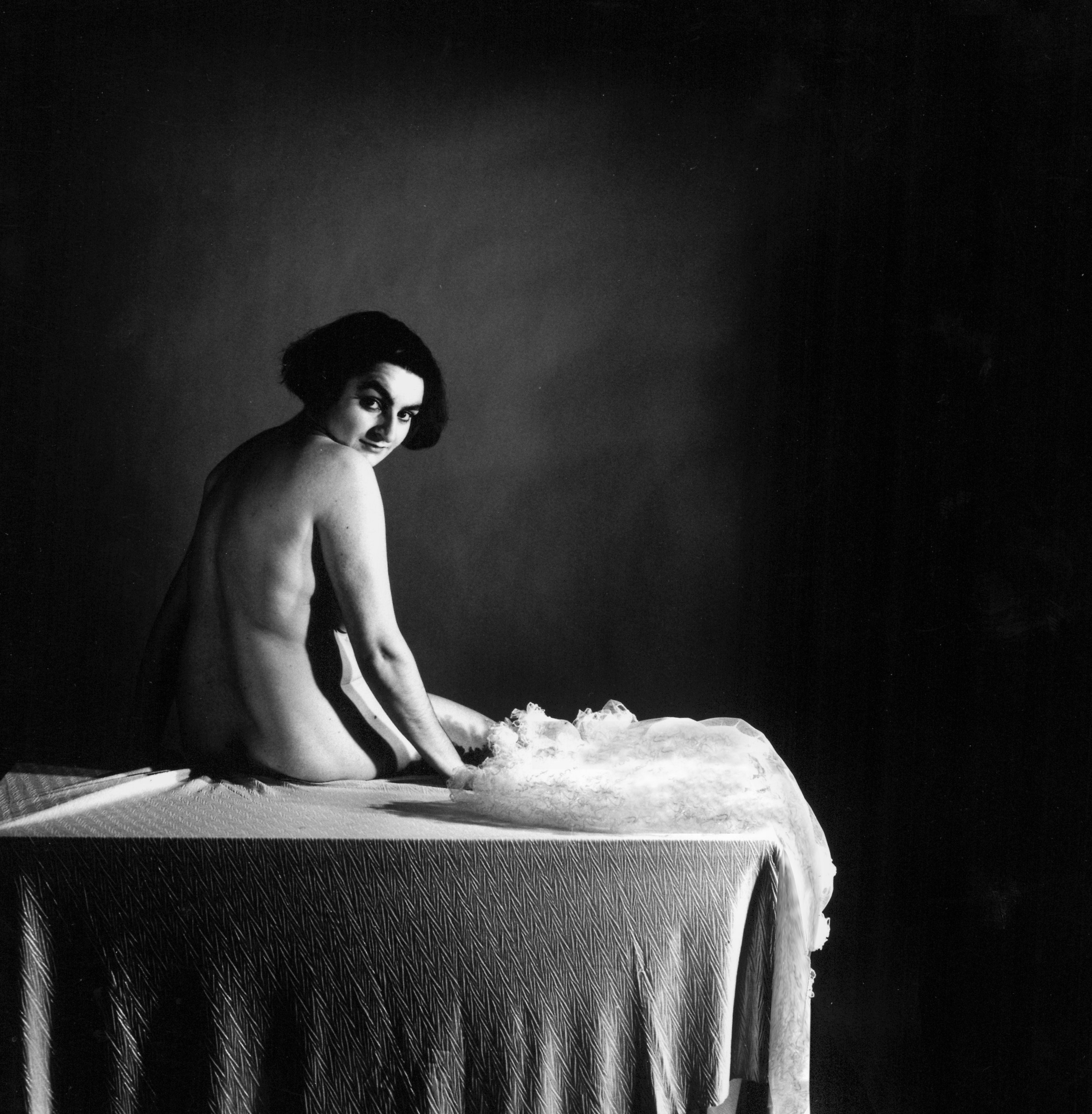Peter Jacobi | Installations that generate autonomous photographs (1980 - 2021)
Working with an unusual approach:
Statements to 'Erdrelief':
'Jacobi cut through the mound by adding a glass wall. Bodies lying in the grass in front of the window are reflected in it and, through the photographing, convey the feeling that they are lying inside. A variant: 'Even in My Sculpture' (1998), in which we see the man stretching his arm through the sediments to her, the woman, voluptuous as a primeval mother. The couple thus lies in a sculpture grave. The man in the installation is Jacobi himself. The 2nd meaning of the work is that of the creator who is sacrificed (in) his own work. This is the only way he can still live after his physical disappearance. The photo album about Transylvania ends with the artist's picture next to an inscription on a grave: 'They rest after their work and their works will follow them'.'
Magda Predescu in the MNAC catalogue, 2021
"The artificial intervention brings tension into the natural environment, created by the foreign body. Nature is the actual spectacle and the staging serves its appearance.
Windows usually allow a view from the inside to the outside, but here a reversal takes place. It is a frame for the everyday spectacle of nature. Thus, among other things, we "see" the gravitational pull of the earth, in the roots gliding on the sloping glass surfaces, seeking their vertical way down."
Isabell Schenk in the flyer of Kunstwochen Baden-Württemberg, 1995
'The colour photographs taken in this earth relief are an independent group of works. In part they show the changing nature behind the glass panes, in part they are posed situations that overlap in their reflection with the relief structure. 1996'
Peter Jacobi, 2021
